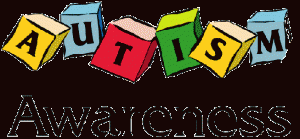
AWARENESS
Individuals with learning disabilities (LD) and those with autism present very different profiles in terms of learning, attention and behavior.
But just like LD, autism spectrum disorders (including Asperger’s Syndrome) do not go away with time. Many individuals with LD struggle with some of the same types of challenges.
Nonverbal Learning Disabilities: A Primer
When most people think about learning disabilities (LD), and particularly as they present themselves during the early elementary and middle school grades, attention is focused on language-related problems such as reading, writing and spelling. This is consistent with the definition of specific learning disabilities that is found in federal law and with the consensus papers written by the National Joint Committee on Learning Disabilities.
Learning Disabilities and Asperger’s Syndrome
Since children with LD and Asperger’s Syndrome (AS) sometimes share characteristics, it is tempting to say that they meet the diagnostic criteria for either classification.
But this is not the case—learning disabilities and Asperger’s Syndrome are separate and distinct disorders, and different types of assessments and strategies for intervention need to be selected to address the distinct and sometimes overlapping features of each.
4 Ways Nonverbal Learning Disabilities Can Affect Your Child’s Social Life
If you’ve ever watched a silent movie, you know how much information and emotion can be conveyed without speaking. Kids with nonverbal learning disabilities (NVLD), however, don’t always understand the facial expressions and body language they’re seeing.
They also have trouble understanding changes in tone of voice. Here are some common social challenges caused by nonverbal learning disabilities.
7 Terms to Know If Your Child Struggles With Nonverbal Learning Disabilities
The lingo that learning specialists use when describing nonverbal learning disabilities (NVLD) can be confusing.
Here are some key terms and phrases to help you understand nonverbal learning issues.
1. Nonverbal communication
Forms of communication that aren’t just words. They include facial expressions, body language and tone of voice. Kids with NVLD often miss or misread these cues.
They tend to have trouble with playful or nonliteral uses of words and get tripped up by things like sarcasm, puns or irony.
2. Social competency
The ability to fit in socially and bond with other people. Social competency depends on having a strong set of social skills, including initiating conversations, taking turns and accurately reading social cues.
3. Developmental delays
Reaching milestones—such as taking a first step or speaking clearly—late. Delays in reaching early milestones are often correlated with delays in the development of future motor, cognitive (thinking) and language skills.
4. Abstract reasoning
The type of thinking that helps to process, analyze and draw conclusions from information. Kids who are weak in this area may be able to successfully read a paragraph out loud but have trouble explaining what it means.
5. Motor skills
The ability to coordinate and carry out movements. Activities that require fine motor skills (small movements) include handwriting, typing and cutting with scissors.
Activities that require gross motor skills (large movements) include kicking, throwing, catching and running.
6. Spatial skills
The ability to understand where two things are in relation to each other in a physical space. Spatial skills help with tasks like reading maps, telling time,
understanding abstract concepts in math and science and sensing physical proximity (such as knowing how close to get to a soccer ball to be able to kick it and how close to stand to a classmate without making him feel uncomfortable).


 WhatsApp us for instant feedback
WhatsApp us for instant feedback